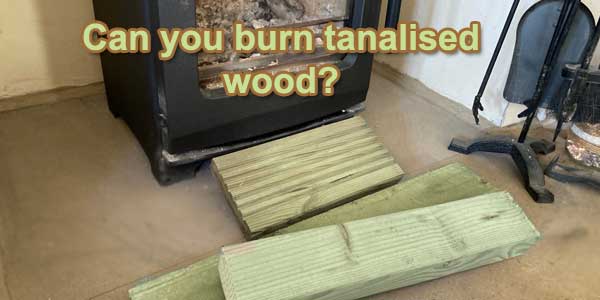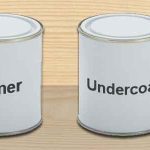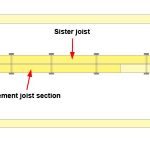Whether you can burn tanalised wood, is a common question. It is a frequently used product, and it can often seem a waste to throw away offcuts. This is especially true if you have a wood, or multi-fuel burner.
Obviously, firewood costs money, and if you have access to treated timber waste, this can be very tempting. Especially if you paid for the timber in the first place, for a DIY project.
You may even work on a building site, or in a timber yard where there is an abundance of waste. In this case, you may be able to fuel your burner completely free, with nothing but daily offcuts. This could include treated studwork timber, treated decking and any other timber that has been tanalised

The real question you need to be asking, is whether it is safe to burn tanalised wood.
In recent years, tanalised wood is treated with a water-based wood preservative, containing copper azole biocides. This is less toxic than older formulations, which contained arsenic and chrome in their formula.
Burning modern tanalised timber will deliver fewer toxic fumes. However, it is still not advised. The treatment still contains chemicals, which can release unpleasant fumes.
This is particularly true in open fires, where fumes can enter your home much more easily. Many people still burn tanalised wood in closed wood burners. However, this still carries a risk of toxic fumes.
Even when tanalised timber is burned in a controlled industrial setting, specific consent will usually be required, in order to maintain safety.
What is tanalised wood?
Tanalised wood, also known as pressure treated wood, is a very common type of wood used in construction. It protects the wood from rot and wood boring insects, due to the chemicals used in its production.
The treatment is injected into the wood under extreme pressure. This happens in large chambers, where timber is submerged in the treatment liquid, and the air is removed from the chamber. This causes a vacuum which forces the treatment deep into the timber.
As a result, the treatment runs right through the wood. This makes pressure treatment far superior to surface-based wood preservatives.
Due to this treatment, tanalised wood is perfect for use outside and anywhere where high levels of moisture will be present.
However, it also means that when you burn tanalised timber, the treatment is present throughout the wood. Which means you are always burning chemicals.
This is not the case with other types of treated timber, such as dip treated products, or those where treatment is manually applied with a paint brush. In these cases, the treatment is only on the surface and the rest of the wood is just plain timber.
In theory, you could remove surface treatments, and still safely burn the wood below. This is not possible with a tanalised product.
Is it legal to burn treated timber in the UK?
Defra (Department for environment food and rural affairs) have recommendations on the type of fuels you can burn in an open fire or wood burning stove. They state quite explicitly, DO NOT burn treated waste wood.
It is also illegal for a company to sell treated timber for use in fires. However, many timber yards will still sell it. To get around the rules, they will just sell it as off cuts, that shouldn’t be used for burning. Despite the fact, that they know this is what it will be used for.
There are stricter rules for approved solid fuels in smoke control areas. However, this focuses more on the fuels that are allowed to be sold for burning, as opposed to those that are not allowed.
In smoke control areas, there are exempt appliances, that will allow the burning of unauthorised fuels. This includes untreated dry wood. So again it doesn’t specifically say that burning treated wood is not allowed. However, it is implied.
The government also has rules for businesses burning wood waste. This includes companies like joinery workshops and manufacturing businesses, where wood waste is created.
In these regulations, they clearly state that burning treated wood is not permitted. This includes burning outdoors and using an incinerator.
So, as you can see, at the very least it is not recommended in residential fires. In certain areas it could result in a fine if used as an unauthorised solid fuel. Also it is not legal in most commercial settings. As we mentioned earlier in the article, special permission may be granted for businesses to burn treated timber in specific circumstances.
Conclusion
It is not recommended to burn tanalised wood. The chemicals used during the treatment process can cause toxic fumes when burned. This is still true for more modern water-based treatments. Whilst they are not as dangerous as older treatments, they still release harmful toxins, which could be damaging if breathed in.
It is particularly dangerous to burn older treated timber. Anything produced before the early 2000’s is likely to contain arsenic, which is a carcinogen. People have also reported hair loss, nosebleeds, headaches, blackouts, seizures, and disorientation.
Whilst it may save you a small amount of money, the potential risk outweighs any savings you would make. Therefore, we recommend that you DO NOT burn treated waste wood.




